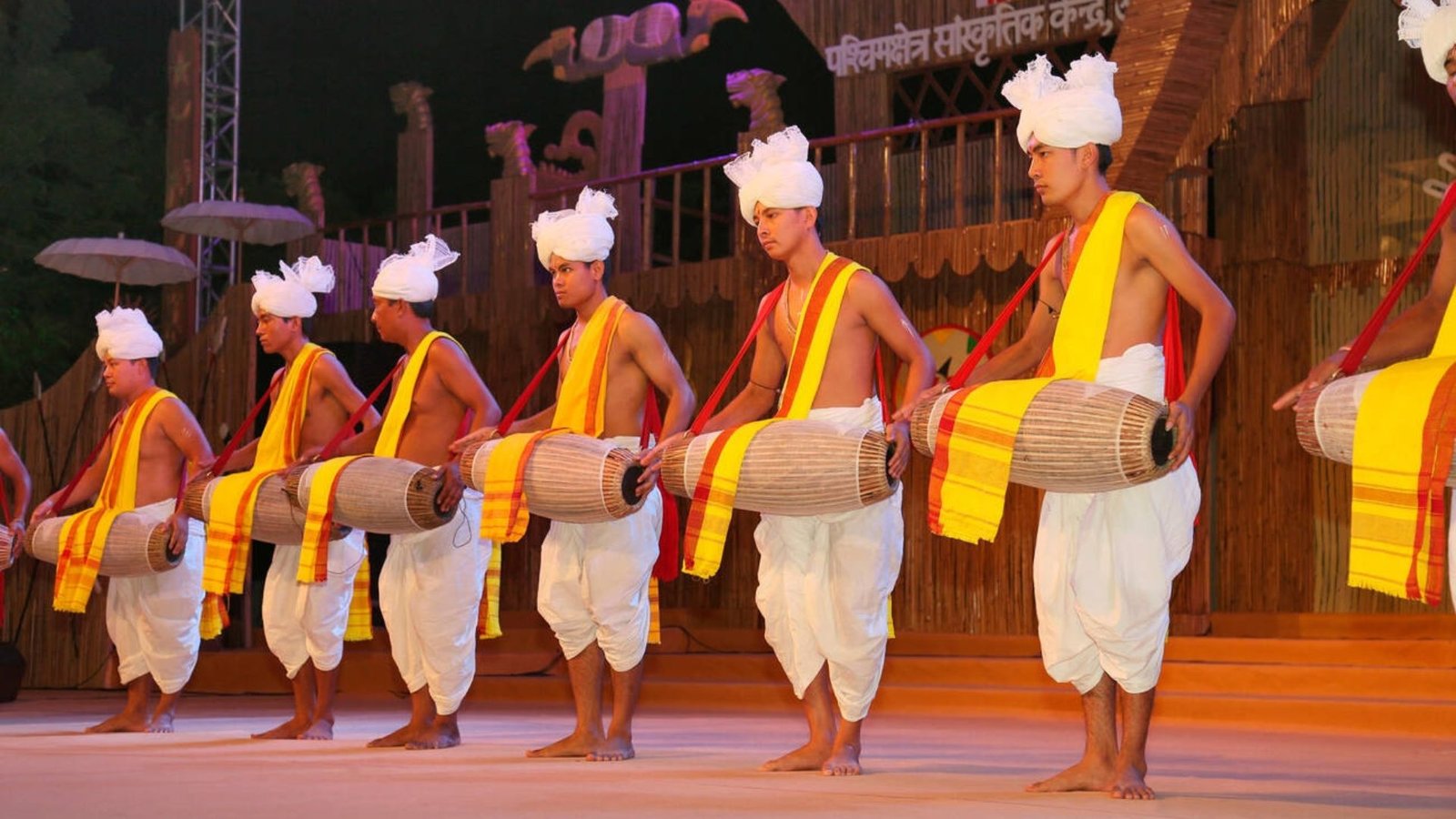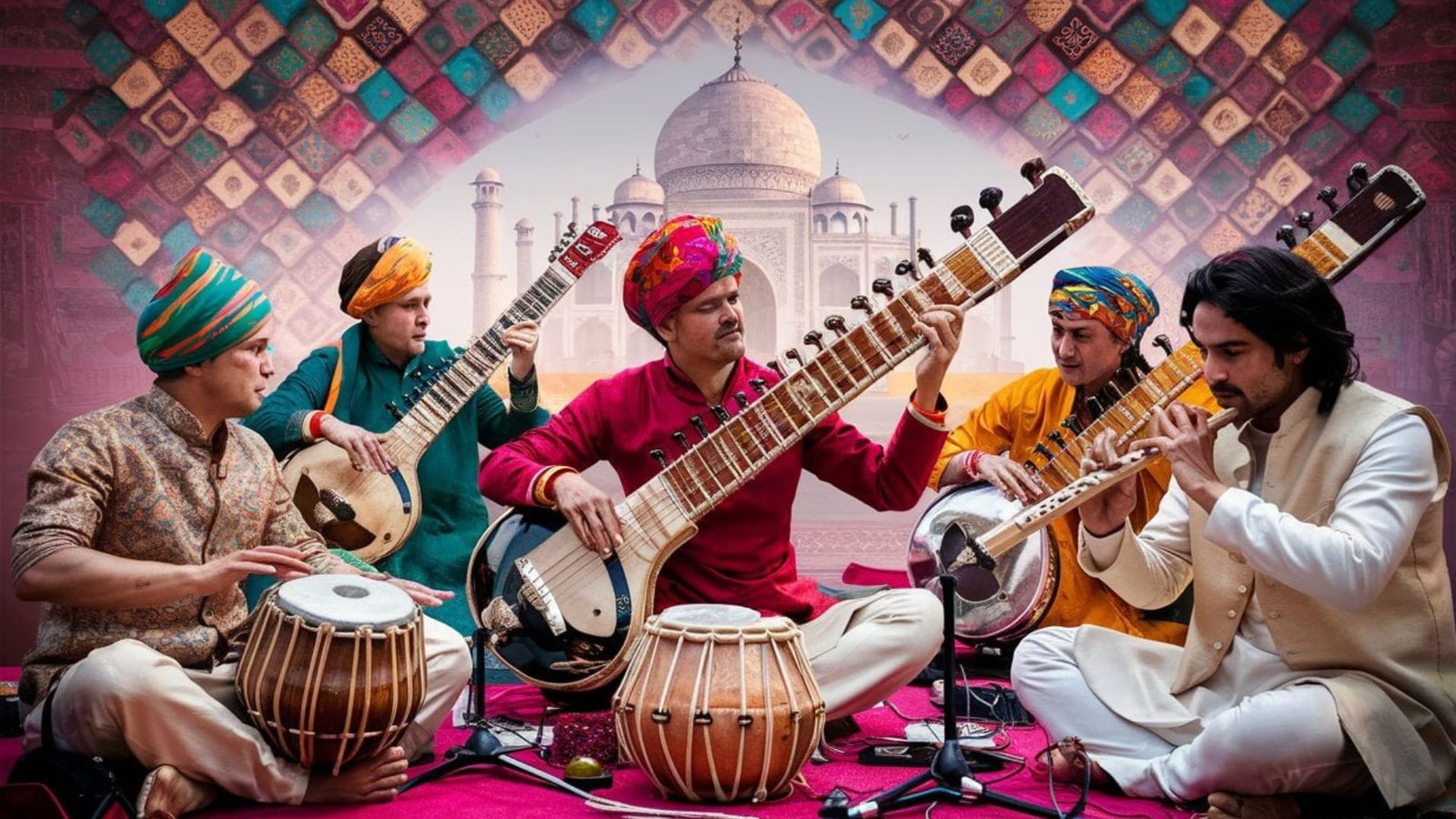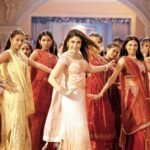Music and Dance in Indian Films: A Vibrant Tradition
Indian cinema is renowned for its colourful, energetic, and melodious integration of music and dance. These elements are not just entertainment; they are integral to the storytelling process, adding depth, emotion, and cultural context. This article explores the vibrant tradition of music and dance in Indian films and their impact on the cinematic experience.

The Essence of Indian Film Music
Indian film music, often referred to as “filmi” music, is a genre in itself, blending various musical styles from classical to contemporary.
Bollywood Music: A Melodious Journey
Bollywood, the Hindi film industry, is particularly famous for its music. Songs in Bollywood films are used to express emotions, advance the plot, and provide entertainment. From romantic ballads to high-energy dance numbers, Bollywood music spans a wide range of genres and styles.
Iconic Composers and Singers
Over the decades, Bollywood has produced numerous iconic composers and singers. Legends like Lata Mangeshkar, Kishore Kumar, A.R. Rahman, and Shreya Ghoshal have left an indelible mark on Indian music. A.R. Rahman, in particular, has achieved international acclaim, winning Oscars for his work in films like “Slumdog Millionaire.”
Regional Film Music: Diversity and Richness
While Bollywood music often takes the spotlight, regional cinema in India also boasts a rich musical tradition. Tamil, Telugu, Malayalam, Bengali, and other regional film industries have their unique musical styles, reflecting the linguistic and cultural diversity of India.
Influence of Classical and Folk Music
Regional film music often draws from classical and folk traditions. For instance, Tamil cinema frequently incorporates Carnatic music, while Bengali films may feature Rabindra Sangeet, the compositions of Rabindranath Tagore. These influences add authenticity and depth to regional films.
Dance: A Visual Spectacle
Dance is another vital component of Indian films, offering visual spectacle and enhancing the narrative.
Bollywood Dance: Energetic and Expressive
Bollywood dance is known for its high energy, elaborate choreography, and expressive movements. It blends classical Indian dance forms with contemporary styles, creating a unique and captivating performance. Dance sequences in Bollywood films often involve large groups of dancers, vibrant costumes, and elaborate sets.
Iconic Choreographers
Bollywood has seen the emergence of several iconic choreographers who have shaped its dance style. Saroj Khan, Farah Khan, and Prabhu Deva are some of the notable names who have created unforgettable dance routines that have become integral to Bollywood’s identity.
Classical and Folk Dance in Films
Indian films also showcase a variety of classical and folk dance forms. Bharatanatyam, Kathak, Odissi, and Kathakali are some of the classical dance styles that appear in films, reflecting India’s rich cultural heritage. Folk dances like Bhangra, Garba, and Lavani add regional flavor to the movies.
The Role of Music and Dance in Storytelling
Music and dance in Indian films are not merely for entertainment; they play a crucial role in storytelling.
Conveying Emotions and Themes
Songs and dance sequences often convey the emotional undertones of a scene, from the joy of a wedding celebration to the sorrow of a heartbreak. They can also highlight cultural themes, social issues, and character development.
Enhancing Audience Engagement
The integration of music and dance keeps the audience engaged and entertained. Memorable songs and dance numbers create a lasting impact, making the film more appealing and enjoyable.
Global Influence and Appreciation
Indian film music and dance have gained international recognition, influencing global culture.
Bollywood’s Global Reach
Bollywood dance classes are popular worldwide, and Indian film music is celebrated in global concerts and festivals. The infectious energy and universal appeal of Indian music and dance transcend cultural boundaries.
International Collaborations
There have been several successful international collaborations in Indian film music. For example, the song “Jai Ho” from “Slumdog Millionaire,” composed by A.R. Rahman, became a global hit, showcasing the fusion of Indian and Western musical styles.
Conclusion
In conclusion, music and dance are integral to the fabric of Indian cinema, enriching the storytelling and providing a unique cultural experience. From the melodious tunes of Bollywood to the diverse rhythms of regional films, these elements captivate audiences and celebrate India’s rich artistic heritage. As Indian films continue to gain global popularity, the vibrant tradition of music and dance remains at the heart of this cinematic journey, bridging cultures and bringing joy to audiences worldwide.
Short Description (20 words): Discover the captivating tradition of music and dance in Indian films, enriching the cinematic experience with cultural vibrancy.


